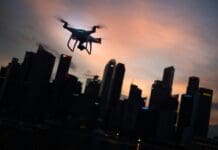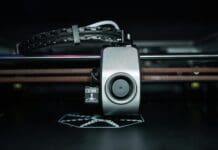This post is also available in:
 עברית (Hebrew)
עברית (Hebrew)
For unmanned aircraft systems to safely fly in increasingly crowded airspace, they must be able to accurately detect and avoid obstacles like trees, power lines, and critically, other aircraft. In efforts to safely introduce more unmanned aircraft into the skies, Virginia Tech researchers and scientists from Brigham Young University have equipped an unmanned aircraft with a newly designed radar system and optical video cameras to collect data that will help aerospace engineers develop avoidance technology.
Mark Blanks, the director of the Virginia Tech Mid-Atlantic Aviation Partnership explained: “This is one of the core challenges with unmanned aircraft systems: the ability to detect and avoid other aircraft,” said .
The Mid-Atlantic Aviation Partnership together with some researchers are aiming to create a database similar to ones used in computer vision research, where huge repositories of labeled images are used as test sets for visual-recognition software. In this case, the database will provide researchers with information on what potential obstacles, like a telephone pole or a small quadcopter, would look like to an aircraft’s sensors. Using two types of sensors could allow aircraft control software to assess potential hazards more accurately.
According to vtnews.vt.edu, the researchers are analyzing and processing the sensor data from the flights, and will store the data in a publicly available database, along with the GPS coordinates corresponding to each data point — showing an obstacle’s true location as well as its sensed location.
This data will aid the community’s understanding of the capabilities and challenges of detecting and avoiding small unmanned aircraft.
Blanks added: “This is an exciting project, because having a readily accessible database like this will be a key enabler for development of new technology to facilitate unmanned aircraft systems integration. It will be phenomenally impactful for the future of unmanned aircraft in the national airspace.”
Current research topics include flight beyond visual line of sight, flight operations over people, unmanned aircraft system airworthiness certification, air traffic management, remote sensing and payload development support, and airspace integration.


























